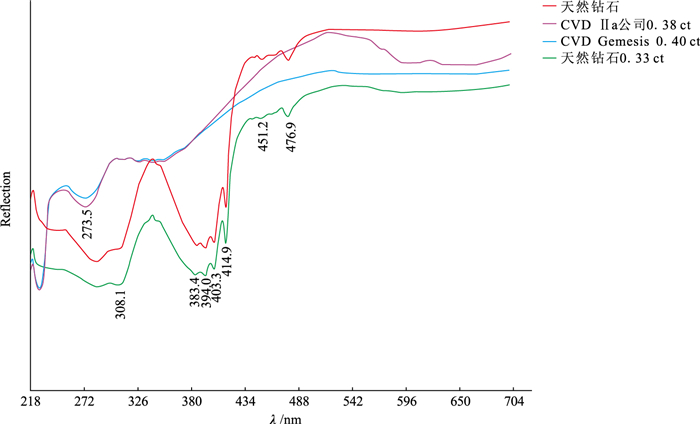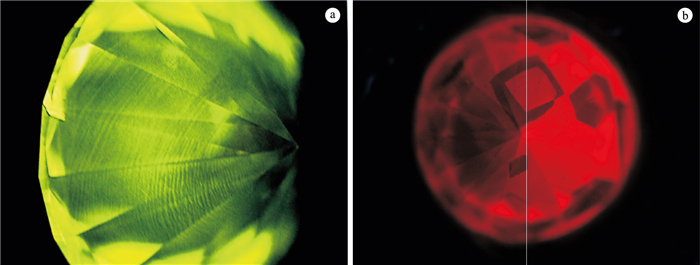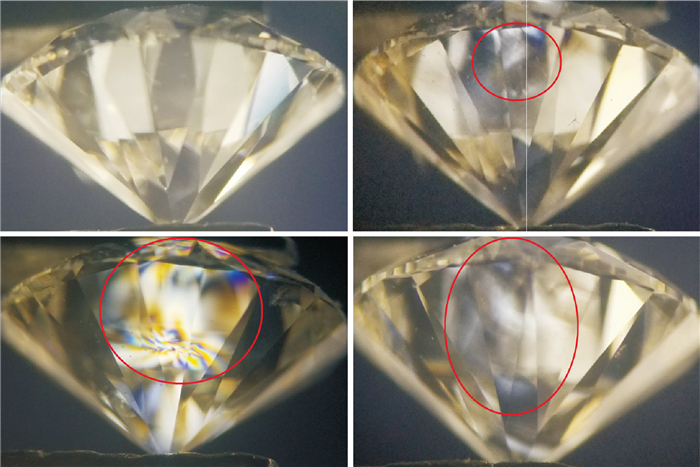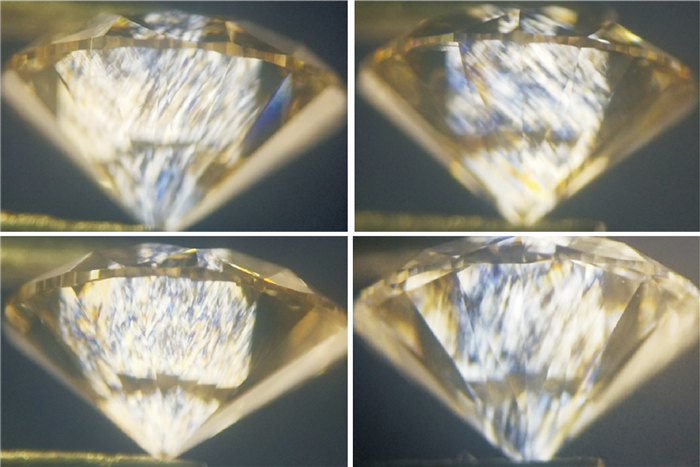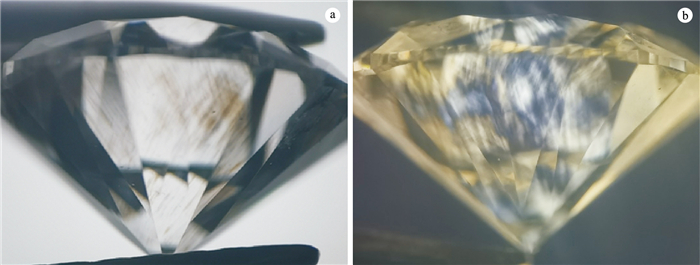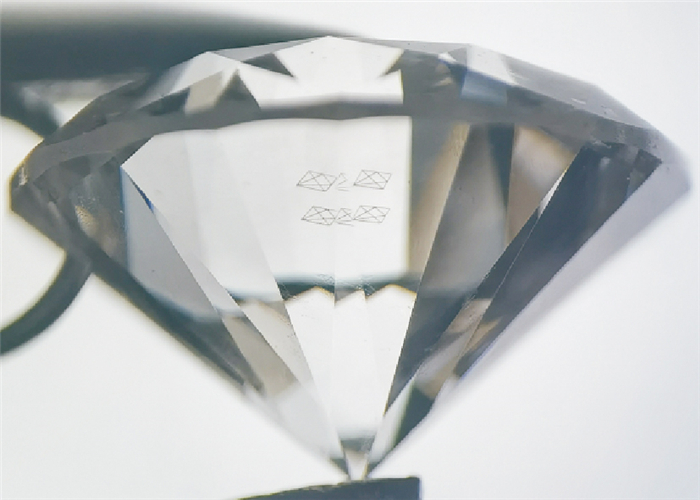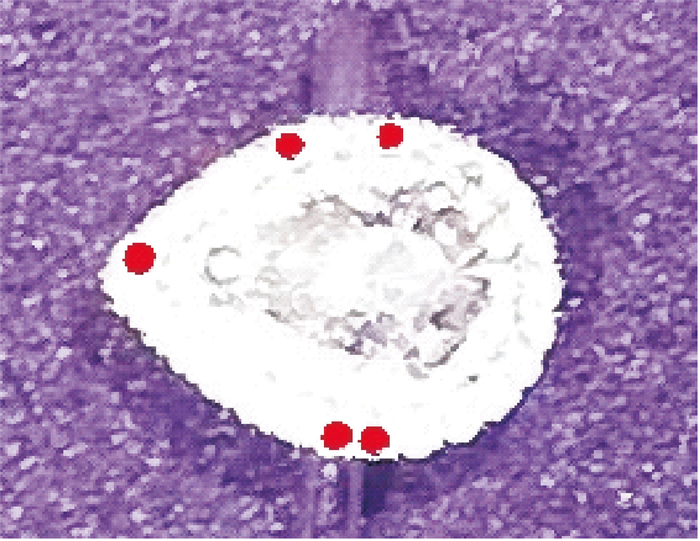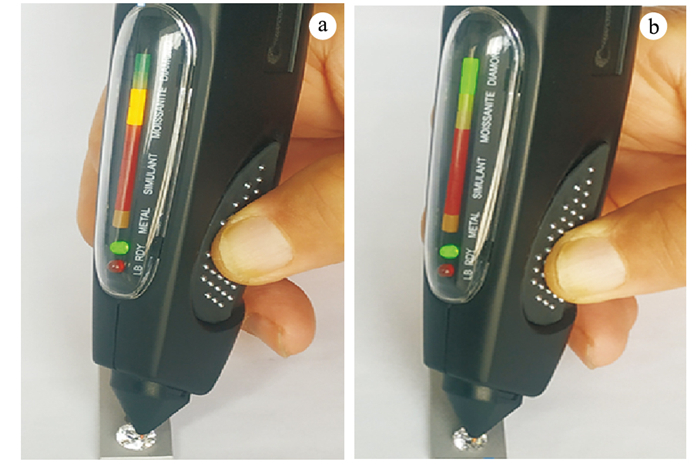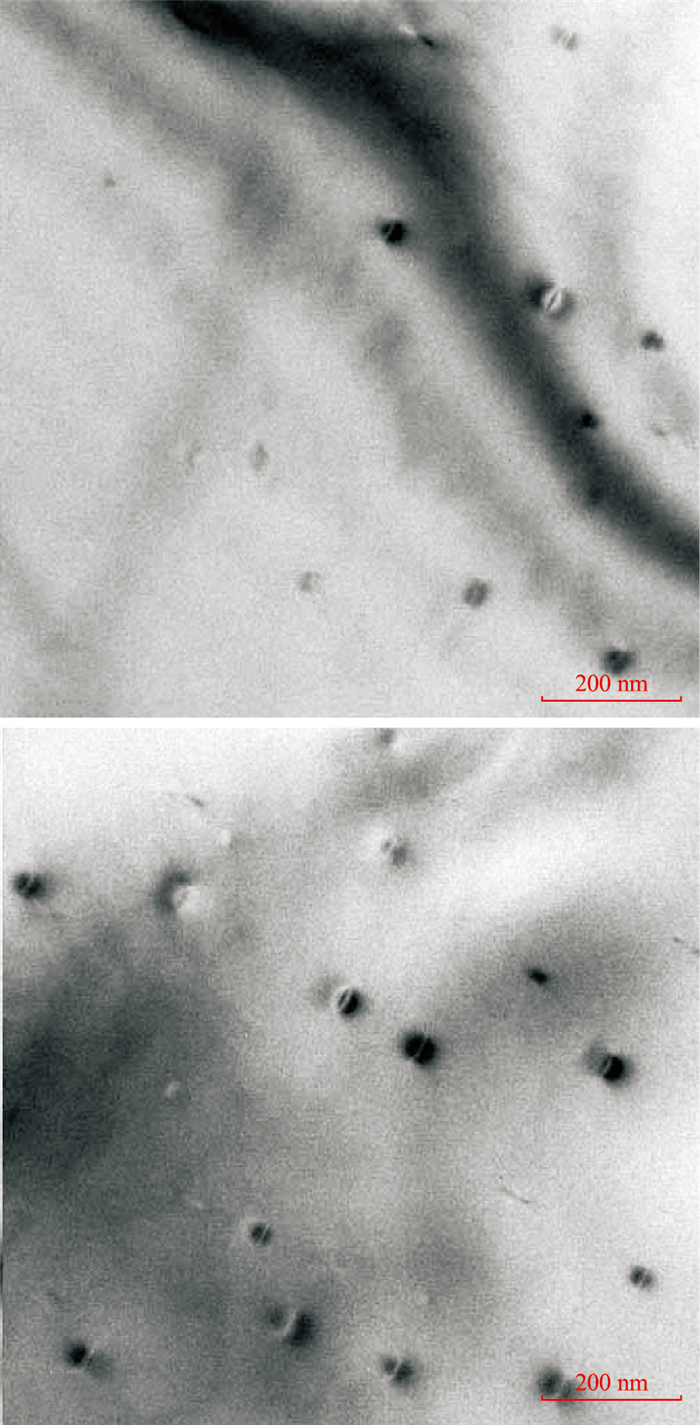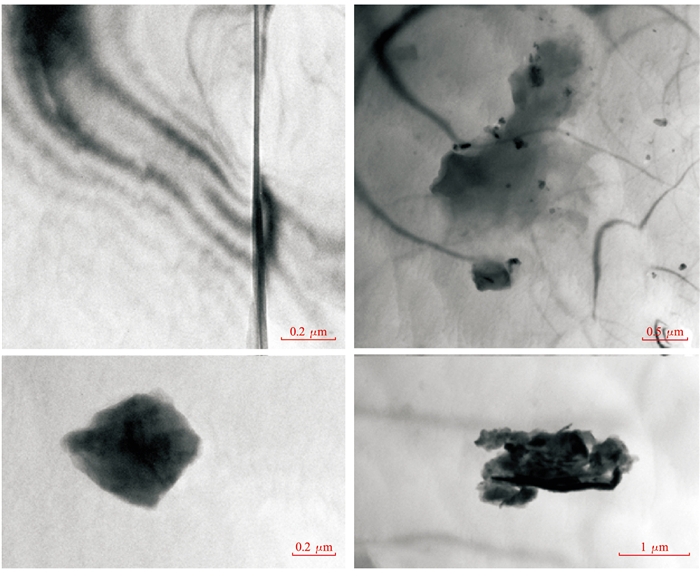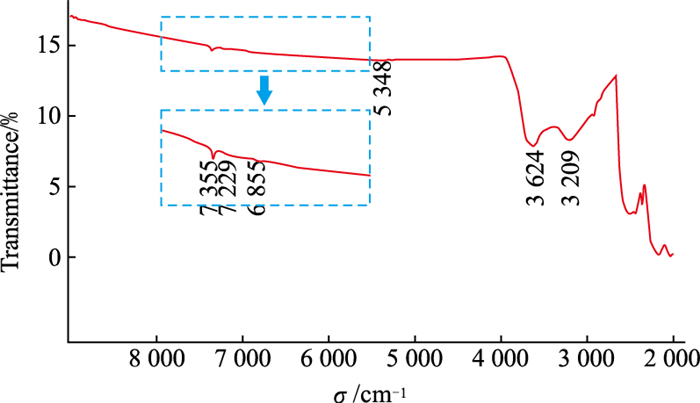A Brief Description of Identification Methods of HPHT and CVD Lab-Grown Diamonds and the Latest Market Analysis
-
摘要: HPHT和CVD培育钻石与天然钻石有着相同的成分和物化性质,唯有生长时的环境、微量元素不同,培育钻石与天然钻石的鉴别特征至今没有一种仪器可以完全分辨出来,需要多种仪器,主要包括强磁吸附、显微放大观察、UV-Vis-NIR、深紫外光、光致发光光谱、正交偏光显微镜、磷光、热导仪、透射电子显微镜、红外光谱等测试方法分别找出微小差异,才可完全鉴别。本文列出各种仪器或方式鉴别特征予以说明。利用UV-Vis-NIR光谱中N3色心415 nm吸收峰;CVD钻石光致发光光谱中737 nm峰;CVD培育钻石在正交偏光下异常双折射条纹特征;HPHT培育钻石具有强蓝色磷光,CVD培育钻石具有中、弱磷光或无发光;热导仪部分HPHT培育钻石显示MOISSANITE,部分显示DIAMOND;在红外光谱未经HPHT改色的CVD钻石,在6 855、7 229、7 355 cm-1范围有数个C-H峰,经HPHT改色后这些峰消失。培育钻石业者除了首饰用途以外,必须积极开发工业用途才能够使培育钻石市场长久生存。Abstract: HPHT, CVD lab-grown diamonds and natural diamonds have the same composition and physical and chemical properties, only the environment and trace elements during growth are different. There is no instrument that can fully distinguish lab-grown diamonds from natural diamounds, and multiple types are needed. Instruments or methods include: strong magnetic, microscopic observation, UV-Vis-NIR, deep ultraviolet light, PL, cross-polarization microscope, phosphorescence, thermal conductivity meter, transmission electron microscope, infrared spectroscopy and other cross-comparisons to find out separately of small differences so that the lab-grown diamonds can be fully identified. This article lists and illustrates the identification characteristics of various instruments or methods. UV-Vis-NIR spectrum N3 colour center at 415 nm absorption peak; CVD diamond PL spectrum has a 737 nm peak of Si-V center; CVD lab-grown diamonds under crossed polarization can show a variety of abnormal birefringence fringes; HPHT lab-grown diamonds under phosphorescence will have strong blue luminescence, and CVD lab-grown diamonds will have medium, weak or no luminescence; in thermal conductivity meter test, some HPHT diamonds show MOISSANITE, and some show DIAMOND; CVD diamonds treated by HPHT show infrared spectrum in the range of 6 855, 7 229 cm-1 and 7 355 cm-1, revealing several C-H peaks, and these peaks disappear after HPHT colour treatment. In addition to the use of jewelry, the lab-grown diamond industry must actively develop industrial uses in order to survive for long time.
-
Keywords:
- lab-grown diamond /
- N3 colour center /
- PL /
- N-V colour center /
- crossed polarizing filters /
- phosphorescence
-
-
图 2 培育钻石的包裹体特征:a.CVD培育钻石具有褶皱状的羽状裂;b.CVD培育钻石棉花球状;c.CVD培育钻石接近表面的多晶斑点; d.CVD培育钻石整层细网状杂质; e.HPHT培育钻石内部的黑色触媒金属包裹体
Figure 2. The inclusions characteristics of lab-grown diamonds: a.Zigzag like feather crack in CVD lab-grown diamond; b.Cotton ball shape inclusions in CVD lab-grown diamond; c.Polycrystalline spots close to the surface in CVD lab-grown diamond; d.The entire layer of fine mesh impurities in CVD lab-grown diamond; e.HPHT lab-grown diamonds with black catalyst metal inclusions inside
图 4 极少的CVD培育钻石显示贝壳状纹理特征(a)[1]和HPHT培育钻石中央显示一较大方形(100)面结构特征,其四周有4个(此图可见3个)十字对称小方形结构特征(b)
Figure 4. Very few CVD diamomds show shell like pattern characteristic[1](a) and a HPHT lab-grown diamond with a larger square (100) face structure in the center of the diamond and four cross-symmetrical small square structure (three are visible in this picture) on the periphery of the diamond(b)
图 5 液氮低温下的CVD培育钻石在596.5、597.2 nm处有小峰, 736.6/736.9 nm处有明显的Si-V峰[2](a)及HPHT培育钻石中773.5 nm峰为钴金属触媒(b)
Figure 5. Photoluminescence of CVD lab-grown diamonds at low temperature in liquid nitrogen showing the small peaks at 596.5, 597.2 nm and clear Si-V peaks at 736.6/736.9 nm(a)[2] and photoluminescence of a HPHT lab-grown diamond showing 773.5 nm peak revealing cobalt metal catalyst(b)
图 11 天然钻石(区域1)、HPHT培育钻石(区域2)及CVD培育钻石(区域3)的磷光特征:a.超短波紫外光照射时发光状态;b.超短波紫外光关掉后磷光发光状态;c.仪器自动将不同强度的磷光转换为红色
Figure 11. phosphorescent characteristics of natural diamonds(area 1), HPHT(area 2) and CVD (area 3) lab-grown diamonds: a.The luminous state of the diamonds when irradiated by ultra-shortwave ultraviolet light; b.After the ultra-shortwave ultraviolet light is turned off, the phosphorescent luminescence state of the diamonds, area 1 shows no phosphorescence, area 2 shows phosphorescence, and area 3 shows medium, weak or none phosphorescence; c.The instrument automatically converts phosphorescence of different intensities into red. Diamonds with strong phosphorescence show all red, diamonds with medium phosphorescence are mostly red, diamonds with weak phosphorescence show red in some area, if there is no phosphorescence, no red shows
表 1 培育钻石及天然钻石的特征
Table 1 Identification characteristics of lab-grown diamonds and natural diamonds
特征 HPHT培育钻石 CVD培育钻石 天然钻石 钻石类型 Ⅱa、Ⅰb Ⅱa、Ⅰb Ⅰa及其它型 晶体形状 塔形、六八面体聚形 立方体、八面体 八面体、菱形十二面体 颜色 无色/近无色 无色/近无色、褐色、灰色 无色/近无色、各种彩色 净度 VVS、VS、SI、P VVS、VS、SI VVS、VS、SI、P 强磁吸引 50% - 0.01% 包裹体特征 黑色触媒金属、云雾状包裹体 多晶钻石、石墨、碳 各种天然包裹体 UV-Vis-NIR N3色心/DiamondSureTM 无 无 98%有 深紫外光/阴极射线 方形、十字形 贝壳状、不规则线条 无、不规则图案 PL Si-V及/DiamondPlusTM 无 50%有 99.99%无 正交偏光 无 充满条柱状纹 褐色外无 磷光 有 中/弱/无 99.99%无 热导仪 钻石/莫桑钻 钻石 钻石 导电性 半导体 无 Ⅱb型外无 -
[1] Martineau P M, Lawson S C, Taylor A J, et al. Identification of synthetic diamond grown using Chemical Vapor Deposition(CVD)[J]. Gems & Gemology, 2004, 40(2): 2-25. https://www.gia.edu/gems-gemology/spring-2004-identification-cvd-synthetic-diamond-martineau
[2] Wang W Y, Billie"Pui Lai" Law. CVD synthetic diamond over 5 carats identified by GIA[J]. Gems & Gemology, 2016, 52(4): 414-416.
[3] Dusan S, Branko D. Laboratory-grown Diamonds[M]. Canada: Gemmological Research Industries Inc, 2020: 131-145.
[4] 邓福铭. Φ62 mmPDC刀具材料及刀具产业化开发进展[A]. 2021超硬材料及制品产业(长沙)交流会, 2021, 10, 14. Deng F M. Φ62 mm PDC Tool Material and Tool Industrialization Development Progress[A]. 2021 Superhard Material and Product Industry (Changsha) Exchange Conference, 2021.10.14. (in Chinese)
[5] 苑执中. 投资HPHT工厂应注意事项[EB/OL]. [2021-10-27]. https://mp.weixin.qq.com/s/LHTMs7WWAUsm9-qCcRntiQ. Yuan J C C. Things to note when investing in an HPHT factory[EB/OL]. [2021-10-27]. https://mp.weixin.qq.com/s/q0LszgRZvYMyqDgzXmx8iw. (in Chinese)
[6] 苑执中. 投资CVD工厂应注意事项[EB/OL]. [2021-10-20]. https://mp.weixin.qq.com/s/wYR-NCou4pU8Kvh2RDVGZg. Yuan J C C. Things to note when investing in a CVD factory[EB/OL]. [2021-10-20]. https://mp.weixin.qq.com/s/xrVhl4jPQRtkpPCXooD_yg. (in Chinese)
[7] 苑执中. 戴比尔斯的培育钻石政策[EB/OL]. [2021-11-03]. https://mp.weixin.qq.com/s/_ZzGJD6yUeHyK7ny1uwZ-A. Yuan J C C. De Beers' policy of lab-grown diamonds[EB/OL]. [2021-11-03]. https://mp.weixin.qq.com/s/SkdGvR42f2_AOD8HD1pNzg. (in Chinese)
[8] 苑执中. 培育钻石的分级报告书问题[EB/OL]. [2021-11-17]. https://mp.weixin.qq.com/s/lKuczQl1lqGwxfbKCfewnw. Yuan J C C. Issues in the LGD Grading Report[EB/OL]. [2021-11-17]. https://mp.weixin.qq.com/s/vKI8CGzaNhT_r8KDTOaPHg. (in Chinese)
[9] 苑执中. 中国培育钻石何去何从[EB/OL]. [2021-10-13]. https://mp.weixin.qq.com/s/Z-44duqlCUB0ppUeamydDA. Yuan J C C. Where Does China Go for Lab-grown Diamond[EB/OL]. [2021-10-13]. https://mp.weixin.qq.com/s/3aWbBmu1CI3MZHFDiVG4mA. (in Chinese)
[10] 苑执中, 培育钻石生产业者的未来[EB/OL]. [2021-10-06]. https://mp.weixin.qq.com/s/bSNBWuJ9HgKV5fuoKn-_Mg. Yuan J C C. The Future of Lab-grown Diamond Producers[EB/OL]. [2021-10-06]. https://mp.weixin.qq.com/s/cp9przkicyNSdaWQ9v87Pg. (in Chinese)
[11] 苑执中. 培育钻石与天然钻石的异同[EB/OL]. [2021-08-11]. https://mp.weixin.qq.com/s/-tZckE00kMf3XaLSsBhLIg. Yuan J C C. LGD vs Natural - Similarities and Differences[EB/OL]. [2021-08-11]. https://mp.weixin.qq.com/s/NFBqlWz7GNli-A5FIydizQ. (in Chinese)
[12] 张栋. 中国钻石革命[M]. 郑州: 郑州大学出版社, 2020: 131-141. Zhang D. China diamond revolution[M]. Zhengzhou: Zhengzhou University Press, 2020: 131-141. (in Chinese)
-
期刊类型引用(4)
1. 李东升,陈燕,曾伟来,夏希悦,林瓴. 彩色CVD钻石的谱学特征及呈色机理研究——以蓝色和粉色CVD钻石为例. 宝石和宝石学杂志(中英文). 2024(S1): 19-23 .  百度学术
百度学术
2. 刘美辰,王铭颖. 培育钻石首饰在市场中的设计初探. 中国宝玉石. 2023(04): 69-77 .  百度学术
百度学术
3. 李兆丽,刘飞,郑永春,余晓艳,肖丙建,杨经绥. 金刚石的撞击成因与找矿新思考. 地质学报. 2023(10): 3493-3496 .  百度学术
百度学术
4. 高洁,郑可,马永,于盛旺,刘克昌,刘亿顺. 煤层气生产宝石级单晶金刚石及其产业化. 太原理工大学学报. 2022(03): 500-506 .  百度学术
百度学术
其他类型引用(1)



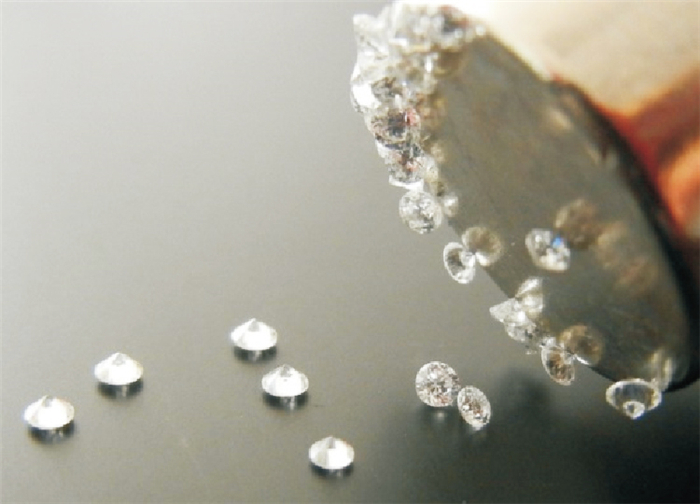
 下载:
下载:

